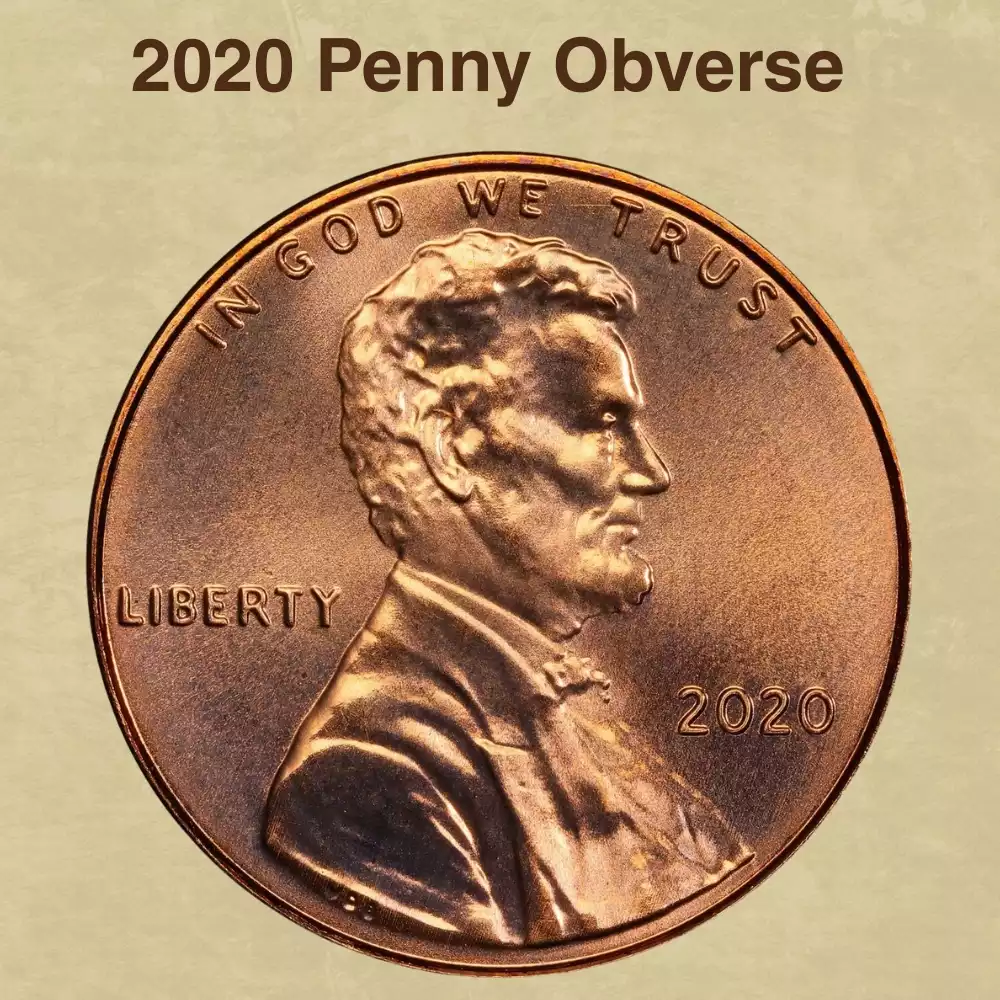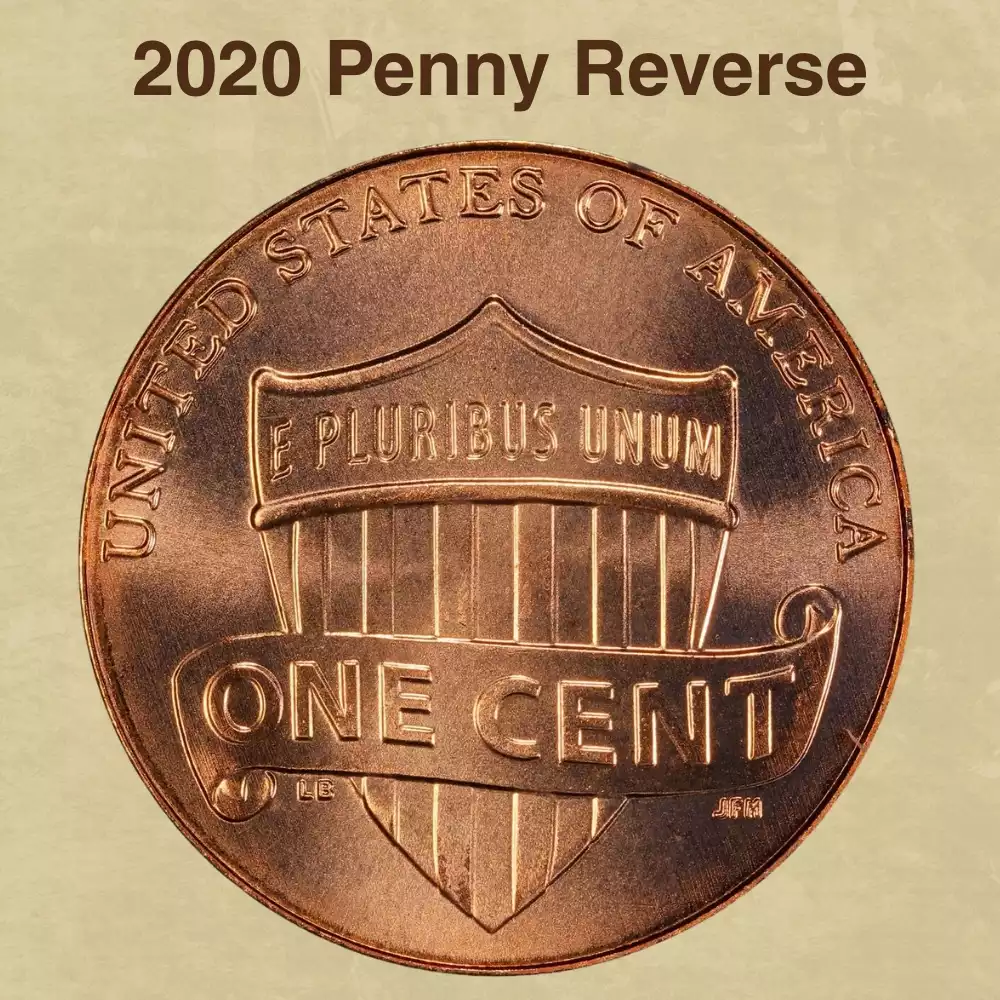What appears to be an ordinary 2020 penny actually holds surprisingly unexpected investment opportunities.
While most circulated 2020 Lincoln pennies are only worth their face value, certain special versions can sell for thousands of dollars, with the most valuable 2020-D penny having sold for an astounding $5,000.
What collection logic lies behind such dramatic value differences, and which key factors can transform an ordinary coin into a precious investment? Let’s delve deep into exploring the true value potential of 2020 pennies.
2020 Penny Value By Variety
This comprehensive value chart reveals the dramatic price variations among different grades and types of 2020 pennies, with values ranging from double-digit dollars in Good condition to over $11,000 for top-grade MS specimens.
2020 Penny Value Chart
| TYPE | GOOD | FINE | AU | MS | PR |
|---|---|---|---|---|---|
| 2020 No Mint Mark Shield Penny Value (RD) | $79 | $182 | $521 | $11,568 | — |
| 2020 D Shield Penny Value (RD) | $64 | $123 | $235 | $5,060 | — |
| 2020 S DCAM Shield Penny Value | — | — | — | — | $913 |
Tip: Chart shows Red (RD) prices only. For Brown (BN) or Red-Brown (RB) values, check our CoinValueChecker App for comprehensive information across all color designations.
2020 Penny Market Trend
Market Interest Trend Chart – 2020 Penny
The 2020 penny captured market attention immediately upon release, with interest reaching a peak of nearly 10,000 in January. This peak indicates that its potential value or unique characteristics had gained early recognition within the numismatic community.
Following this remarkable pinnacle, the trend curve experienced a gradual decline from 2020 to 2021, punctuated by several secondary surges that prevented a complete collapse in market interest.
This controlled descent rather than a precipitous drop demonstrates that ongoing discoveries of valuable varieties that periodically reignited market attention, also further indicating that the coin retained genuine collecting merit beyond its initial novelty.
From 2022 to 2025, market interest gradually declined and eventually stabilized around 2,000 to 1,200. Unlike other penny coins that experience brief popularity spikes before disappearing, this sustained baseline represents genuine market acceptance.
From its initial issuance that sparked significant market interest to the subsequent cyclical resurgence in later stages, the overall trajectory demonstrates that the 2020 penny has successfully transitioned from a new release category to a recognized collectible.
This enduring appeal positions it strategically within the competitive framework of the US Coin Market Trend Ranking (Top 100), where sustained market attention typically correlates with long-term collecting potential.
History of the 2020 Penny
The 2020 penny emerged from one of the extraordinary years in American history—not because of any change in its design or composition, but because it epitomizes the United States’ efforts to sustain economic normalcy during one of the most devastating years in modern history, standing as a historically significant testament to the nation’s economic resilience during the pandemic era.
When COVID-19 struck in early 2020, the United States witnessed something unprecedented: a nationwide shortage of coins puzzled economists and frustrated consumers. Federal Reserve Chair Jerome H. Powell said in a Wednesday hearing before the House Financial Services Committee that “the flow of coins through the economy has gotten all — it’s kind of stopped.”
Daniel Socks, Assistant Professor of Economics at the University of North Carolina Wilmington, described this situation as a “perfect storm,” noting that businesses heavily reliant on coin transactions such as laundromats may have already shut down, while consumers actively avoid cash transactions due to concerns about contracting COVID-19 through physical currency contact.
By July 2020, the Federal Reserve created the U.S. Coin Task Force to address this problem. Upon the recommendation of the working group, Financial institutions began offering free coin kits to customers, while some banks provided cash bonuses for customers who brought in coins.
Parents were encouraged to use this “weird time in history as a teachable moment” for children learning about money. Major retailers like Chick-fil-A offered free sandwiches in exchange for coins, while casinos attract customers by offering free slot machine play to customers who deposit change.
At the same time, the U.S. Mint dramatically ramped up penny production, delivering 8.174 billion cents, up 11.7% from the previous year.
The effectiveness of these measures became evident by 2021, when the Federal Reserve was able to lift coin allocation caps that had been imposed in June 2020, though circulation patterns never fully returned to pre-pandemic levels.
Key Features Of The 2020 Penny
The 2020 penny showcases enduring American numismatic craftsmanship through its distinctive Union Shield design and meticulous construction standards.
This copper-plated zinc composition coin demonstrates remarkable clarity in both Lincoln’s classic portrait and the patriotic shield imagery, reflecting the U.S. Mint’s commitment to quality during challenging production circumstances.
The Obverse Of The 2020 Penny

The coin’s obverse presents Abraham Lincoln in a timeless right-facing profile that has remained virtually unchanged since Victor David Brenner’s original 1909 design. Lincoln’s portrait demonstrates remarkable artistic depth, capturing the president’s distinctive beard, determined expression, and period clothing with masterful precision.
The inscriptional layout follows established tradition: “IN GOD WE TRUST” curves gracefully above Lincoln’s portrait, while “LIBERTY” flows behind his profile. The year “2020” appears prominently to the right of Lincoln’s collar, and Brenner’s signature “VDB” initials can be found discretely positioned on the shoulder area of the portrait truncation.
The Reverse Of The 2020 Penny

The reverse side features Lyndall Bass’s Union Shield design, which symbolizes President Lincoln’s preservation of the United States as a single, unified nation. The shield displays thirteen vertical stripes representing the original colonies, unified by a horizontal bar across the top that bears the motto “E PLURIBUS UNUM.”
The patriotic inscriptions frame the shield design with “UNITED STATES OF AMERICA” forming an arc around the coin’s upper edge. A decorative banner bearing “ONE CENT” stretches across the shield’s midsection, clearly indicating the denomination while integrating seamlessly with the overall composition.
Other Features Of The 2020 Penny
The 2020 penny measures exactly 19 millimeters in diameter and weighs 2.5 grams, with a metal composition of 97.5% zinc and 2.5% copper. The coin features a zinc core with copper plating that provides the characteristic penny appearance while offering enhanced durability compared to earlier solid copper compositions.
2020 Penny Grading
Understanding how to properly evaluate a 2020 penny requires knowledge of the professional grading system that determines collector value.
Professional grading services utilize the internationally recognized Sheldon Scale, ranging from 1 to 70, with 70 representing a perfect coin under 5x magnification. When evaluating Lincoln cents, professional graders examine Lincoln’s hair texture for wear patterns, inspect the wheat ears or shield details for completeness, assessing contact marks specifically in the open field areas around Lincoln’s portrait.
And they also evaluate the sharpness of letter details in “LIBERTY” and “IN GOD WE TRUST,” determining color retention by measuring the percentage of original copper-red coloration versus brown oxidation.
Most 2020 pennies fall within the MS60-MS65 range when uncirculated, with MS63-MS64 being the most common grades for coins showing typical bag marks and minor contact points.
Typical 2020 pennies from Philadelphia and Denver mints grade between MS63-MS65, while proof coins from San Francisco typically achieve PR69-PR70 grades due to their superior striking process and careful handling.
For an accurate assessment, use our CoinValueChecker App to instantly check your coin’s grade and current market value.

Understanding these grading fundamentals becomes essential when learning to evaluate any Lincoln penny’s condition and potential value. Explore our comprehensive guide on How to Grade Lincoln Pennies for detailed evaluation techniques and visual references.
2020 Penny Value Guides
The 2020 Lincoln Shield penny was produced in three distinct varieties across different U.S. Mint facilities:
- 2020 No Mint Mark Shield Penny (Philadelphia Mint)
- 2020-D Shield Penny (Denver Mint)
- 2020-S DCAM Shield Penny (San Francisco Mint)
Philadelphia and Denver produced billions of coins for everyday circulation, while San Francisco focused exclusively on premium proof editions featuring Deep Cameo (DCAM) contrast. Each variety carries unique mint marks and production characteristics that directly influence both market availability and collector value.
2020 No Mint Mark Shield Penny Value

In 2020, pandemic lockdowns paralyzed America’s coin circulation, prompting the Philadelphia Mint to adopt emergency production protocols, striking 3.37 billion one-cent coins during this crisis.
The turbulent production environment created distinctive characteristics in these coins: sharper die impressions due to reduced die usage frequency, enhanced copper plating consistency from slower production speeds, and superior surface quality as quality control teams had more time to oversee each coin’s creation under reduced capacity operations.
This unique production environment yielded coins with exceptional technical qualities that proved crucial for achieving the highest grades. The 2020 No Mint Mark Shield Pennies’ common circulated examples hold merely face value, while specimens representing top quality in MS69RD can reach up to $760, representing a premium of 76,000% over face value, rivaling classic key-date rarities.
Red-Brown (RB) varieties showing natural oxidation patterns typically trade 20-30% below RD counterparts, while Brown (BN) specimens, though commanding modest premiums over circulation strikes, represent the most affordable entry point into the series.
This dramatic premium demonstrates how pandemic-era production anomalies combined with immediate collector recognition transformed seemingly ordinary cents into potential modern rarity-grade treasures.
This exceptional price performance naturally leads us to examine the broader auction landscape that has established benchmark values for these contemporary Lincoln cents.
| Date | Platform | Price | Grade |
|---|
The Shield penny series has demonstrated remarkable vitality in today’s collecting market, with market activity revealing sustained collector interest that defies traditional assumptions about modern coinage.
Market Activity: 2020 No Mint Mark Shield Penny
To understand how the 2020 No Mint Mark Shield Penny performs against other Lincoln cent varieties in current collector markets, consult the detailed Lincoln Pennies Market Activity Ranking (Top 100) for comprehensive trading insights across the entire series.
2020-D Shield Penny Value

The 2020-D Shield Penny defies traditional rarity metrics through its “condition scarcity paradox.” Despite Denver producing billions of these coins in 2020, truly pristine high-quality Red specimens remain “elusive treasures” against the backdrop of mass distribution.
Fresh from Denver’s presses, these coins emerge with brilliant orange-red copper surfaces displaying mirror-like fields and sharp, crisp design definition.
When retaining at least 85% of their original red luster, these coins are classified as Red (RD). However, copper’s reactive nature begins oxidation within hours of striking, and commercial circulation accelerates this transformation.
When coins lose 5% to 95% of their original mint color, they receive a Red-Brown (RB) designation, presenting a spectrum from warm orange-brown patches to deep chocolate toning with residual red highlights. Brown (BN) specimens typically retain 5% or less original color, displaying smooth light-to-dark brown or streaky tan coloration.
This transformation accelerates through exposure to humidity, temperature fluctuations, and atmospheric pollutants. Collectors seeking preservation should store coins in cool, dry environments, with professional encapsulation using inert plastics providing optimal protection against further oxidation.
Statistical data reveal that genuine Red examples in MS69 grades represent less than 0.1% of the original mintage, commanding prices up to $760, while most surviving high-grade specimens fall into Red-Brown categories as natural toning progresses even within protective holders.
2020-D Shield Penny Price/Grade Chart
Price by 1-70 Grade (Latest Auction Records Included)















